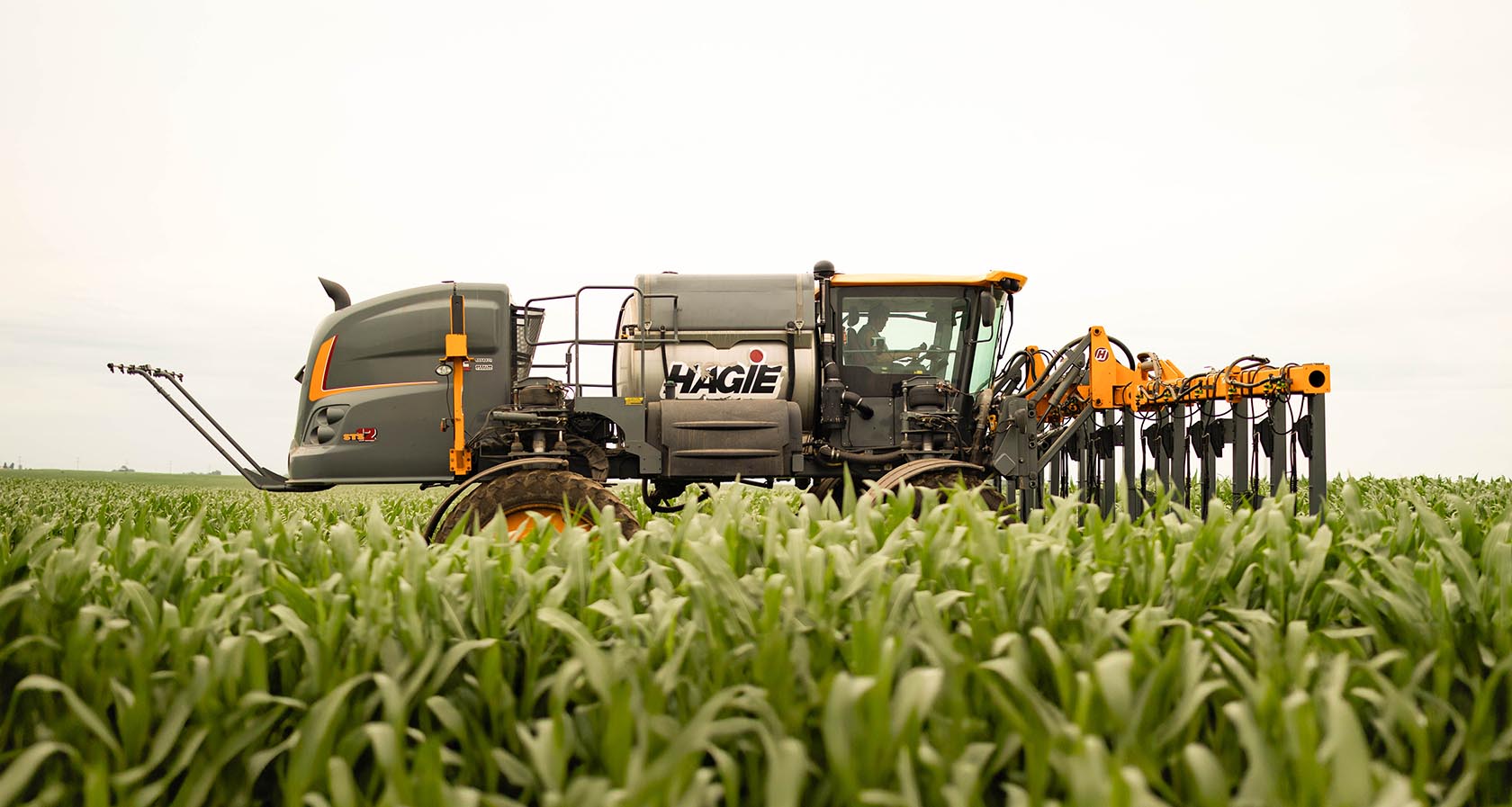
(Photo: Iowa Soybean Association / Joclyn Kuboushek)
Boost efficiency with Iowa Nitrogen Initiative trials
August 5, 2025 | Alex Schaffer, CCA
Key takeaways:
- Multi-rate nitrogen trials are a valuable tool to determine economic optimum nitrogen rate.
- Use Iowa State University's Nitrogen Fertilizer Application Consultation Tool at n-fact.ag/start.
- To maximize profitability, focus management on 4R principles.
The Iowa Nitrogen Initiative is now in its third year of on-farm trials with the goal of optimizing nitrogen rate recommendations for farmers across Iowa. The project, led by Iowa State University and supported by collaborators including Iowa Soybean Association's (ISA) Research Center for Farming Innovation (RCFI) and others, has logged 627 multi-rate enhanced learning blocks (ELBs) among 184 farmers over the past three years. So far in 2025, ISA added 55 new farmers to the list of participants expanding the reach of the project and helping drive toward the goal of approximately 400 ELBs per year.
Turning data into gains
Farmers participating in this effort support better nitrogen recommendations for farmers across Iowa and receive an end-of-season report that contains the economic optimum nitrogen rate (EONR) specific to their trial and field, yield at the EONR, and nitrogen use efficiency (NUE), a measure of pounds of added nitrogen required to produce a bushel of corn.
These metrics are useful in helping to identify areas where efficiency can be improved on the farm.
For example, if a farmer sees a NUE number of 0.9- or 1.0-pounds nitrogen/bushel, there are likely some areas of management that can be improved to produce more bushels of grain with less added nitrogen fertilizer.
Weather conditions play the biggest role in determining the EONR, but there are several other things a farmer can do to improve EONR and NUE. One consideration is access to labor and equipment to apply nitrogen at multiple points throughout the growing season, otherwise known as split-application.
Split-application serves two purposes; the first is being able to apply nitrogen fertilizer as close as possible
to maximum plant uptake, and the second is the option to adaptively manage your nitrogen fertilizer program. This means adjusting your total nitrogen applied to a field according to the weather conditions of the current growing season.
In general, more rainfall requires more nitrogen due to both higher yield potential and increased nitrogen losses.
N-FACT
The other outcome of this work is a new and improved nitrogen rate recommendation tool to replace ISU's corn nitrogen rate calculator. The new tool is called the Nitrogen Fertilizer Application Consultation Tool, or N-FACT, and can be found at n-fact.ag/start.
This tool models optimum nitrogen rates by considering geographic and management information as well as multi-rate nitrogen trial results from across the state to make individual recommendations to farmers.
My favorite feature of the tool is the ability to input your planned crop scenario well ahead of the growing season to generate a baseline nitrogen plan and run comparisons as the season progresses to understand how your EONR changes. These recommendations can adjust total nitrogen applied based on EONR derived from the tool.
Hybrid nitrogen use efficiency
Farmers are also using these trials to their advantage by classifying their hybrids by nitrogen use efficiency. One farmer participant had a large field planted with multiple hybrids from different seed providers blocked in sections of the field. Trial design placed multiple ELBs into this field by hybrid to better understand if the genetics responded differently to nitrogen fertilization rates. Results found that different hybrids, even when managed the same, can return greatly different nitrogen use efficiency numbers. One hybrid returned NUE of between 0.6 and 0.7 pounds per bushel and the other at 1 pound of nitrogen required to produce a bushel of grain. Not necessarily surprising, but very useful when it comes to understanding hybrid selection and placement across the farm. This information is meaningful to have on the farm given today's commodity market where maximizing efficiency is essential.
Trial opportunities
The Iowa Nitrogen Initiative is a great way to contribute to the sustainability of Iowa's farms by improving nitrogen rate recommendations, increasing efficiency on the farm and reducing nitrogen losses to the environment. Tools based on real on-farm research like Iowa State University's N-FACT will become increasingly important as farms continue to generate data and researchers become better at analyzing the data and making recommendations. This project will continue for years to come, so consider hosting a plot yourself and using the tool as you are contemplating your next nitrogen application.
Contact me to learn more about the Iowa Nitrogen Initiative and this trial opportunity at aschaffer@iasoybeans.com.
Written by Alex Schaffer.
Back